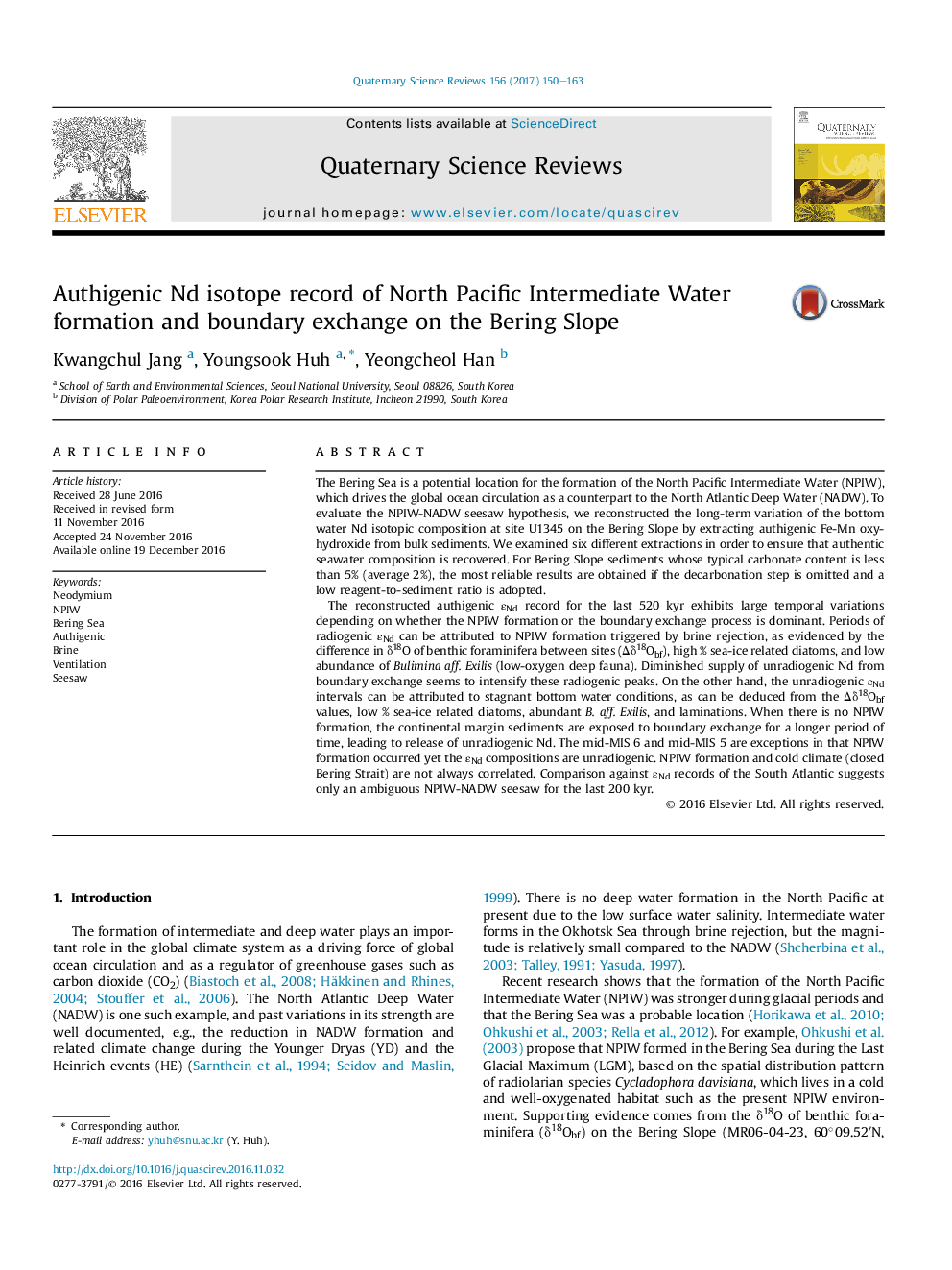| Article ID | Journal | Published Year | Pages | File Type |
|---|---|---|---|---|
| 5786794 | Quaternary Science Reviews | 2017 | 14 Pages |
Abstract
The reconstructed authigenic εNd record for the last 520 kyr exhibits large temporal variations depending on whether the NPIW formation or the boundary exchange process is dominant. Periods of radiogenic εNd can be attributed to NPIW formation triggered by brine rejection, as evidenced by the difference in δ18O of benthic foraminifera between sites (Îδ18Obf), high % sea-ice related diatoms, and low abundance of Bulimina aff. Exilis (low-oxygen deep fauna). Diminished supply of unradiogenic Nd from boundary exchange seems to intensify these radiogenic peaks. On the other hand, the unradiogenic εNd intervals can be attributed to stagnant bottom water conditions, as can be deduced from the Îδ18Obf values, low % sea-ice related diatoms, abundant B. aff. Exilis, and laminations. When there is no NPIW formation, the continental margin sediments are exposed to boundary exchange for a longer period of time, leading to release of unradiogenic Nd. The mid-MIS 6 and mid-MIS 5 are exceptions in that NPIW formation occurred yet the εNd compositions are unradiogenic. NPIW formation and cold climate (closed Bering Strait) are not always correlated. Comparison against εNd records of the South Atlantic suggests only an ambiguous NPIW-NADW seesaw for the last 200 kyr.
Related Topics
Physical Sciences and Engineering
Earth and Planetary Sciences
Geology
Authors
Kwangchul Jang, Youngsook Huh, Yeongcheol Han,
